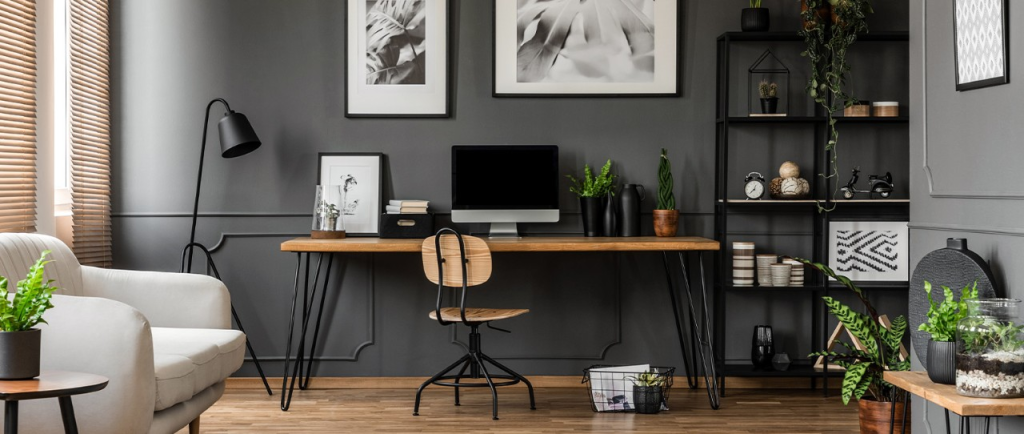Introduction
The importance of good lighting in a home office cannot be overstated. Proper lighting improves productivity, reduces eye strain, and enhances the overall aesthetic of your workspace. Whether you work from home full-time or use your office occasionally, having the right lighting setup is crucial. This article explores various home office lighting ideas to help you create a well-lit, efficient, and comfortable workspace.
Natural Light: The Best Choice
Natural light is the most beneficial form of lighting for a home office. Exposure to sunlight boosts mood, increases energy levels, and helps regulate sleep patterns. Here’s how to maximize natural light:
- Position Your Desk Wisely: Place your desk near a window to take advantage of daylight while avoiding direct glare on your computer screen.
- Use Sheer Curtains or Blinds: These allow natural light to enter while reducing harsh glare.
- Reflect Light with Mirrors: Positioning a mirror opposite a window can help bounce natural light around the room.
Ambient Lighting: Creating a Balanced Atmosphere
Ambient lighting provides overall illumination for your home office and prevents harsh contrasts between bright screens and dark surroundings. Consider these options:
- Ceiling Lights: A central ceiling fixture, such as a pendant or flush-mount light, ensures even lighting.
- Recessed Lighting: These fixtures are great for modern office spaces, providing a clean and uniform light distribution.
- Floor Lamps: A well-placed floor lamp can brighten up darker corners of the room.
Task Lighting: Focused and Functional
Task lighting is essential for activities that require concentration, such as reading, writing, or working on a computer. Some effective task lighting options include:
- Desk Lamps: Adjustable desk lamps with LED bulbs provide targeted lighting and reduce eye strain.
- Under-Cabinet Lights: If your home office includes built-in shelving, under-cabinet lighting can illuminate your workspace without occupying desk space.
- Clip-On Lights: These are flexible and can be attached to desks or shelves for focused lighting.
Accent Lighting: Enhancing Aesthetics
Accent lighting adds depth and character to your home office while making it a more inviting space. Some ideas include:
- Wall Sconces: These can add a warm, decorative touch to your workspace.
- LED Strip Lights: Placing these behind a desk or bookshelf creates a modern and stylish look.
- Smart Lighting: Smart bulbs allow you to customize brightness and color temperature, adapting your office ambiance to different tasks.
Choosing the Right Bulbs
Selecting the right bulbs is just as important as choosing the right fixtures. Here are some key factors to consider:
- Brightness (Lumens): A home office should have a brightness level of around 3000-6000 lumens for optimal visibility.
- Color Temperature (Kelvin): A temperature of 4000K-5000K (cool white) is ideal for workspaces, as it enhances focus and alertness.
- Energy Efficiency: LED bulbs are the best choice due to their longevity, low energy consumption, and minimal heat output.
Reducing Glare and Eye Strain
To maintain comfort and avoid eye strain, follow these tips:
- Use Adjustable Lighting: Lamps with adjustable brightness settings allow you to modify lighting based on the time of day and task.
- Position Lights Correctly: Avoid placing lights directly behind your computer screen to minimize glare.
- Take Breaks: The 20-20-20 rule (look 20 feet away every 20 minutes for 20 seconds) can help reduce eye fatigue.
Conclusion
Creating the perfect lighting setup in your home office involves a combination of natural, ambient, task, and accent lighting. By carefully selecting fixtures and bulbs, positioning your desk strategically, and incorporating glare-reducing techniques, you can transform your workspace into a bright, comfortable, and productive environment. Investing in quality lighting is not just about aesthetics—it directly impacts your efficiency and well-being while working from home.
Cassia Rowley is the mastermind behind advertising at The Bad Pod. She blends creativity with strategy to make sure ads on our site do more than just show up—they spark interest and make connections. Cassia turns simple ad placements into engaging experiences that mesh seamlessly with our content, truly capturing the attention of our audience.


